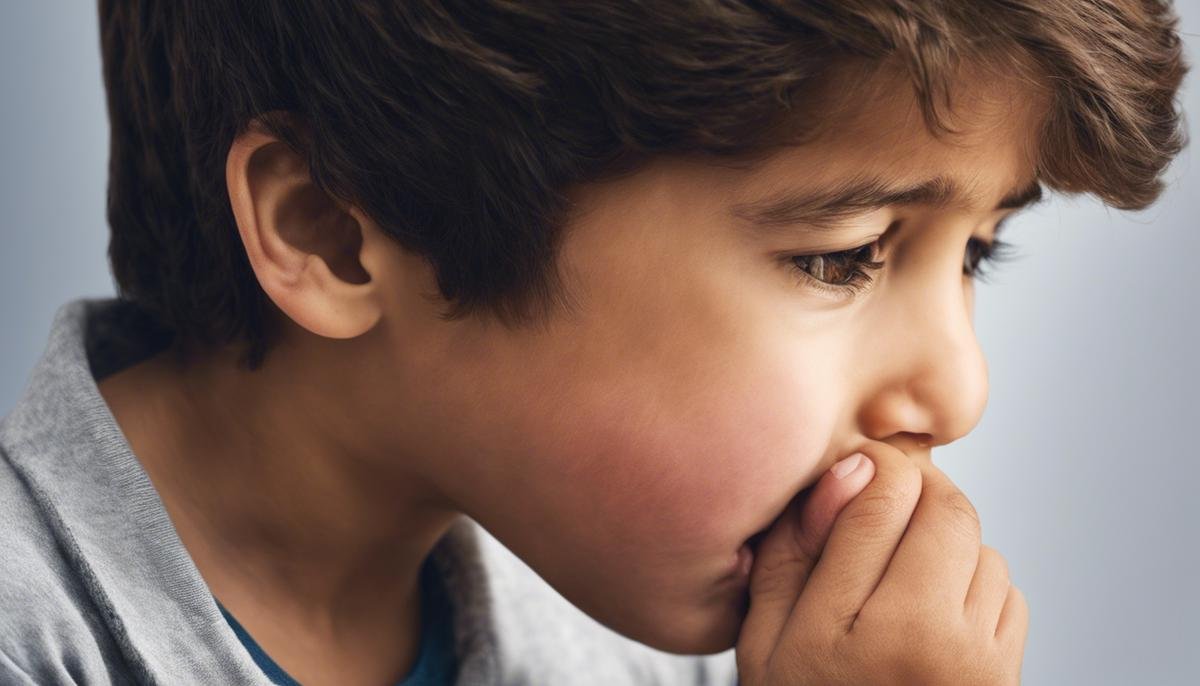
The intricate symphony of the human senses is a marvel, with each playing a pivotal role in how we perceive and navigate our world. However, when one of these senses, like the olfactory sense, is intensified, it can lead to a condition known as hyperosmia—an exceptional sensitivity to odors. Within the realm of neurodiversity, particularly among individuals on the autism spectrum, hyperosmia can be a common yet complex experience. In this exploration, we seek to unravel the threads that connect the heightened olfactory sensitivity of hyperosmia to the autistic experience, shedding light on the challenges it presents in everyday life while also showcasing the resilience and adaptability of those who live with it.
What is Hyperosmia and its Occurrence in Autism
Navigating Hyperosmia in Autism: Understanding the Heightened Sense of Smell
Have you ever noticed a heightened sensitivity to odors in some of our little ones, especially those on the autism spectrum? Maybe your child can sniff out a freshly baked batch of cookies faster than you can say “chocolate chip,” or perhaps they’re overwhelmed by the scent of a citrus-scented cleaner that barely registers on your own nose. This heightened sense of smell has a name: hyperosmia, and it’s a fascinating, if not particularly well-known aspect of the sensory processing differences that can be associated with autism.
Hyperosmia is essentially an increased sensitivity to odors, where one’s olfactory perception is dialed up to the n-th degree. In the colorful spectrum of unique traits that mark the lives of individuals with autism, hyperosmia can play a pretty stealthy role. It’s like having a superpower that can either enchant or distress, with little in-between.
When diving into the numbers, the exact prevalence of hyperosmia in individuals with autism isn’t set in stone. Research is an ongoing journey, and as we unpack the intricacies of the brain and sensory processing, it becomes apparent that individuals with autism experience the world in vibrant, varied ways. What’s clear, though, is that sensory sensitivities, including hyperosmia, are more common among the autism community compared to the neurotypical population.
This keen sense of smell can shape lives in subtle and significant ways. Picture a world where a whiff of perfume isn’t just pleasant but overpowering or a stray scent of onions evokes an intense response. For parents and caregivers, understanding hyperosmia opens up avenues for supportive strategies to help manage those sensory-rich encounters. It’s about creating environments that respect these sensory preferences and being mindful of potential triggers that may be inconsequential to us but monumental to our sensory-sensitive loved ones.
Navigating hyperosmia calls for a blend of empathy and creativity. It involves finding unscented or mildly scented products for household use, preparing for outings by considering the olfactory landscape, and advocating for our kids in spaces where strong odors could be overwhelming. Remember that communication is key; empower those with hyperosmia to express their needs and preferences. Encourage them to recognize when an odor is becoming too much and to feel comfortable seeking a more neutral-smelling safe space.
In the rich tapestry of the human experience, hyperosmia is but one thread that can stand out significantly for individuals with autism. As we continue to build communities that embrace diversity and inclusion, let’s keep our minds—and noses—open to the experiences of those around us, especially the super-smellers in our lives. Whether it’s swapping out that lemon-scented cleaner or opting for fragrance-free laundry detergent, small adjustments can make a big difference in fostering a more hospitable world for those with hyperosmia. And isn’t that what family and community are all about? Creating spaces where everyone can thrive, one sensory experience at a time.

Impact of Hyperosmia on Daily Life and Behavior
Hyperosmia can play a subtle yet significant role in shaping everyday routines and interactions for those on the autism spectrum. Surprisingly, this heightened sense of smell may influence dietary preferences, as strong or unusual odors from certain foods could become overwhelming, deterring individuals from a varied diet. Embracing simple mealtime changes, such as choosing mild-scented foods and avoiding overpowering spices, could lead to more enjoyable and stress-free dining experiences.
Social scenarios can also present challenges. What many consider normal environments – bustling cafeterias, crowded public transport, or scented stores – may prove to be sensory minefields for someone with acute olfactory sensitivities. To navigate these social waters, carrying comfort items, like a favorite scent or unscented wipes for neutralizing overwhelming smells, helps to create a buffer against the sensory overload.
Additionally, hyperosmia can influence sleep patterns. Since we know that scent has the power to affect mood and relaxation, individuals with hyperosmia might find certain bedroom smells disruptive, leading to difficulties winding down or staying asleep. An environment with clean, neutral air, perhaps aided by air purifiers or unscented products, could foster a restful sanctuary.
Selecting appropriate clothing and personal care items also demands special attention. Fabrics washed in heavily-scented detergents or softeners; or clothes made from materials that trap odors, can be uncomfortable or even distressing. On the flip side, personal care products that are hypoallergenic and free from artificial fragrances can contribute to a sense of well-being and body confidence.
When exploring the world of work or study, accommodations are key. For adults and teens, advocating for a workspace away from strong-smelling areas like cafeterias or janitorial storage can significantly reduce sensory stress. For younger children, classroom management strategies like a scent-free policy can support a more productive learning environment.
Navigating the subtleties of hyperosmia requires a blend of awareness, preparation, and tactful alterations to everyday life. With each small, adopted change, one carves out a more manageable and enjoyable existence, both for individuals with hyperosmia and those around them. A little understanding goes a long way to ensuring that our homes, classrooms, and social spaces are welcoming to all, regardless of sensory challenges.

Strategies for Managing Hyperosmia in Autistic Children
Navigating the Scented World: Practical Approaches for Families with Autistic Children Experiencing Hyperosmia
Navigating life with a high sense of smell, known as hyperosmia, can be like walking through a minefield for children on the autism spectrum. As families grapple with this reality, there are practical strategies that can make this journey a bit easier for both the child and the family unit.
One of the first steps is creating a “scent-safe” zone at home. This is a designated area where the child can retreat when feeling overwhelmed by odors. Parents can keep this area free from strong smells by using unscented cleaning products and avoiding air fresheners or heavily perfumed items. This can become a haven for the child, offering a breath of fresh air—quite literally.
When documenting sensory triggers, don’t overlook the power of a smell diary. Keep track of incidents when smells seem to cause distress and try to identify patterns or specific odors to avoid. This can be particularly helpful during doctor visits or when seeking accommodations at school.
Fostering independence in the child to manage their hyperosmia is another crucial strategy. Teach them how to politely excuse themselves from strong-smelling environments or politely ask others to refrain from using certain scented products around them. Equip them with subtle coping mechanisms like wearing a scarf that they can use to cover their nose if needed.
Encourage social understanding among siblings and peers. This can be done through simple yet effective educational sessions where friends and family learn about hyperosmia and how it affects the child. This understanding promotes empathy and can lead to a supportive community around the child.
Professional guidance is also invaluable. Occupational therapists can work with children to desensitize them gradually to certain smells. They can also provide personalized coping strategies and tools to manage sensory overload, such as noise-canceling headphones to block out overwhelming sounds that often accompany strong smells.
Lastu, connecting with support groups can provide a wealth of shared experiences and resources. These groups offer a platform to learn from others who have walked a similar path and can suggest adaptations and strategies that might not be immediately obvious.
Remember, the aim is to empower children with hyperosmia to navigate their world confidently. With the right support and understanding, they can flourish despite the challenges that heightened olfactory sensitivity brings. As parents, it’s all about adapting and learning—finding that blend of strength and gentleness to guide our children through a world that is often fragrantly intense.

The Role of Professionals in Diagnosing and Treating Hyperosmia
Navigating the world with an enhanced sense of smell can be a daunting task, particularly for those with autism. This brings us to the critical topic of professional guidance and treatment. Who can families turn to for support?
When it comes to diagnosing and treating hyperosmia in individuals with autism, a multifaceted team approach is often the most effective. Pediatricians are typically the first point of contact. They can identify the signs of hyperosmia and provide initial guidance. Due to their consistent contact with the child, they play a pivotal role in noticing changes or concerns.
For a comprehensive evaluation, families might be referred to a neurologist. These specialists can dive deeper into the neurological underpinnings of both autism and hyperosmia. They’ll often use a combination of patient history and diagnostic tools to understand the sensory sensitivities at play.
Another invaluable expert is the otolaryngologist, an ear, nose, and throat doctor, who can rule out any other conditions that may be affecting the sense of smell. If hyperosmia is tied directly to sensory processing issues, as is common in individuals with autism, other professionals come into the picture.
Occupational therapists are akin to detectives of the sensory world. They have the skills to assess sensory processing and offer interventions that can be tailored to the individual’s unique needs. Through various therapies, they assist in developing coping mechanisms that ameliorate the effects of hyperosmia and improve the individual’s daily functioning.
A psychologist or counselor with experience in autism can also be a great asset. They provide not only strategies to cope with the stress and anxiety that can come with sensory overloads but also create safe spaces for individuals to express their feelings and experiences.
In terms of the treatment process itself, it involves a blend of assessment, intervention, and adaptation. The initial step is to ascertain the extent to which hyperosmia affects the individual’s life. This might include smell tests or tracking reactions to different scents.
Subsequently, intervention strategies will likely include behavioral techniques, environmental modifications, and sometimes desensitization practices. Creating a personalized toolkit that includes sensory-friendly products and outlining coping strategies for different settings is also key.
Adaptation covers the educational and lifestyle adjustments necessary to accommodate an individual’s needs, both at home and in wider society. This might include communicating with schools and workplaces to ensure they understand hyperosmia and can provide the necessary supports.
Lastly, it’s always encouraging to tap into the wisdom of the community. Support groups for families dealing with autism can offer practical advice, share experiences, and provide a network of support that can be immensely comforting.
In summary, if hyperosmia in autism is a concern, remember that there are professionals who can provide the necessary guidance and support. It’s all about creating a care circle that empowers individuals with heightened olfactory senses to lead fulfilling lives in a world that’s wonderfully aromatic, yet at times overwhelmingly so.

Creating a Community Support System for Families Dealing with Hyperosmia
Building a Supportive Community for Families Impacted by Autism and Hyperosmia: Beyond Awareness to Inclusive Action
When a family member with autism experiences hyperosmia, the heightened sensitivity to smells can transform the simplest routines into challenging hurdles. However, amid these trials lies a profound opportunity for families, friends, and communities to unite and evolve into a bedrock of support. So, how do we weave the fabric of such a community? Let’s delve into actions that bridge understanding and uplift the quality of life.
Leverage Technology for Connection and EducationIn a digital age, leveraging technology transports the conversation about hyperosmia into global living rooms. Families can use social media platforms to form online communities, bringing together individuals from diverse backgrounds to collaborate and support one another. These digital spaces also act as a vehicle for education, where sharing articles, videos, and firsthand accounts demystify hyperosmia and autism, fostering a collective understanding.
Innovative School Programs and InitiativesSchools have a pivotal role in cultivating empathy and inclusion. Establishing programs that educate peers about hyperosmia and sensory processing can create a supportive school environment. Lessons that involve interactive activities and simulations can help classmates grasp what their peers may experience. Furthermore, schools can launch initiatives that encourage students to become ‘scent detectives’, committed to maintaining a fragrance-free zone to support those with olfactory sensitivities.
Engagement in Community EventsParticipation in local events raises awareness and promotes unity. Families can liaise with event organizers to ensure that gatherings such as fairs, markets, and concerts consider sensory-friendly accommodations. This proactive approach not only benefits those with hyperosmia but also positions the community as inclusive and considerate of all residents’ needs.
Collaborate with Local Businesses and VenuesA communal effort with businesses can transform towns and cities into havens for those with sensory sensitivities. Restaurateurs, retailers, and public venue managers can be part of the solution by minimizing scents and offering ‘low-odor’ hours or sections. Such adjustments not only demonstrate social responsibility but could also expand patronage to include those who might otherwise avoid these environments.
Foster a Participatory Culture in Decision MakingInvolving those with hyperosmia in decision-making, pertaining to the treatments they receive or the modifications made in their environments, bestows them with agency and respect. Through town hall meetings or local councils, family members can advocate for policies that reflect the needs of hyperosmia individuals. Such inclusive policymaking not only empowers but also enlightens the broader population.
Celebrate Successes and Share StoriesCelebrating small victories and sharing success stories can have a ripple effect throughout the community. Whether it’s a child who managed a full day at school without sensory overload or a business that has successfully implemented fragrance-free protocols, acknowledging these triumphs uplifts spirits and inspires others.
Practical Workshops and Training SessionsBy hosting practical workshops and training sessions, community centers can provide residents with tools and knowledge to adapt their homes and lives to be more inclusive. These sessions can range from creating sensory-friendly spaces to cooking for dietary preferences affected by hyperosmia.
As families navigate the complexities of autism and hyperosmia, the surrounding community can evolve into a robust support system. From digital connections to inclusive local policies, the key to success lies in collaborative efforts that validate experiences and provide practical support. By uniting under the banner of understanding and inclusion, a truly supportive community for families affected by hyperosmia is not just a dream—it’s a shared endeavor, ready to be realized.

The journey through understanding hyperosmia and its place within the autism spectrum illuminates the broader spectrum of human experience and the varied ways in which sensory perception can shape one’s interaction with the world. By embracing the unique sensory realities of individuals with autism and hyperosmia, we can pave the way to more inclusive environments and support systems. These efforts reflect a deeper societal commitment to valuing diversity, fostering empathy, and ensuring that each individual has the opportunity to live with dignity and comfort in a world that acknowledges and respects their sensory experiences.




